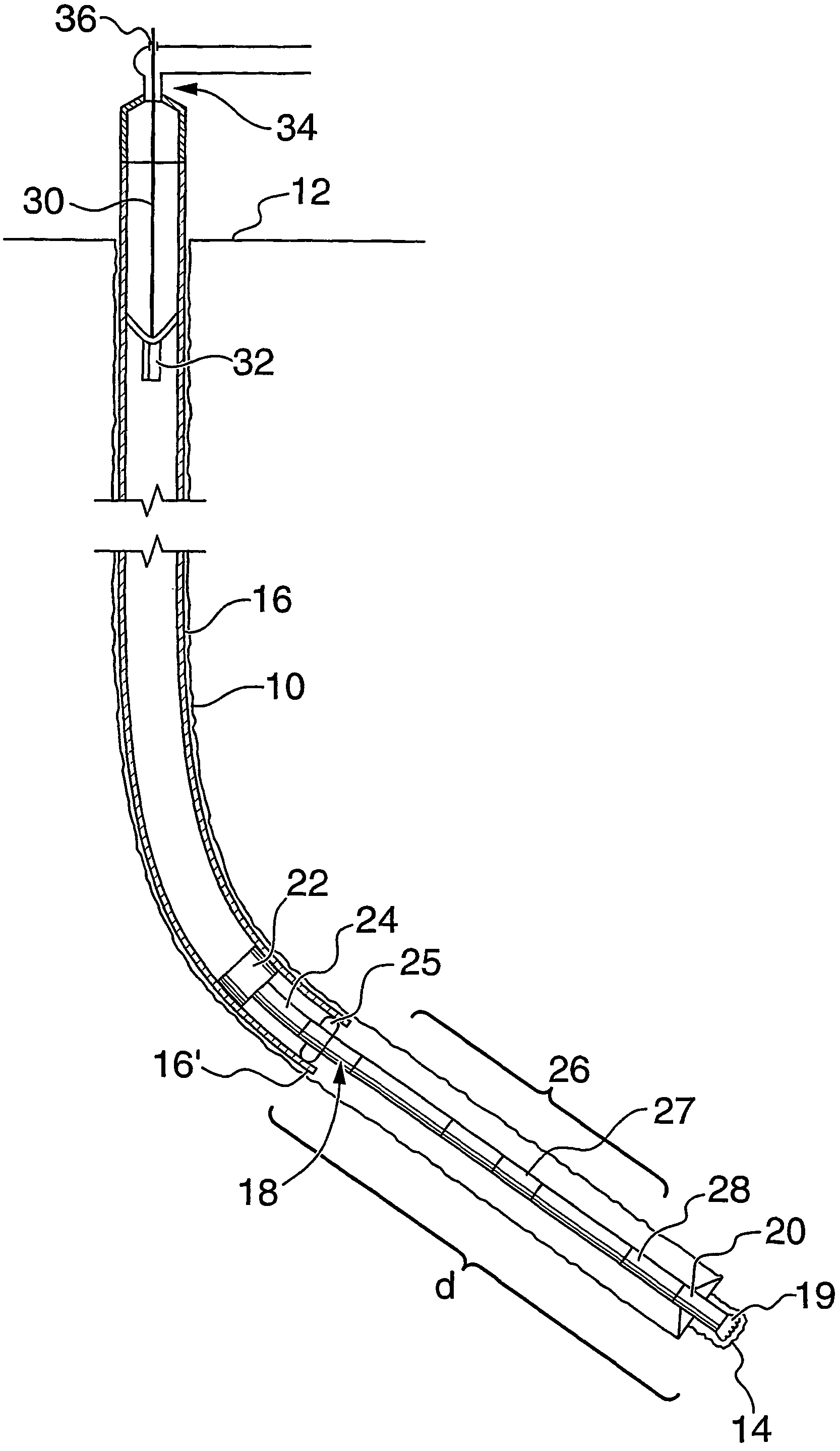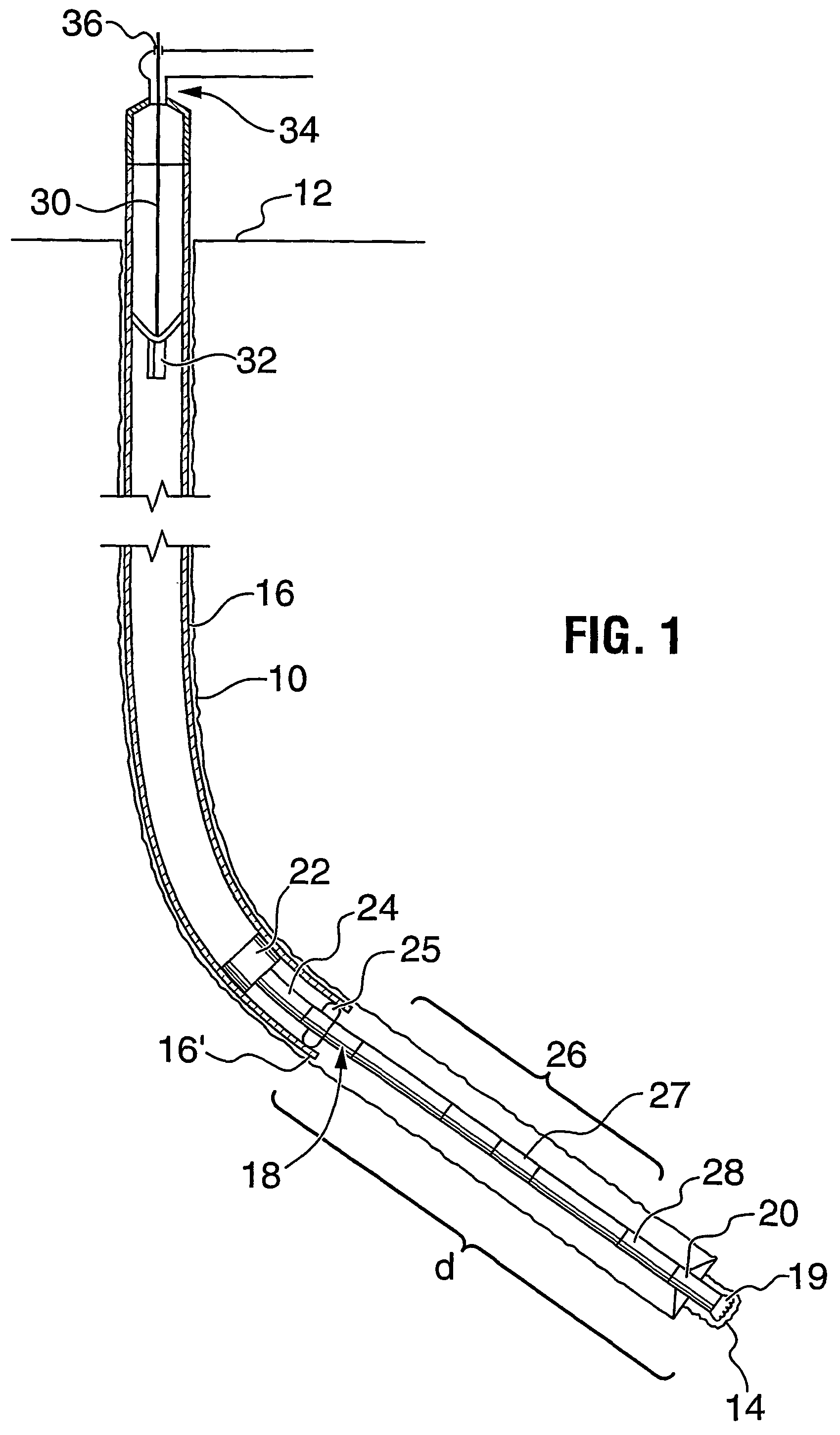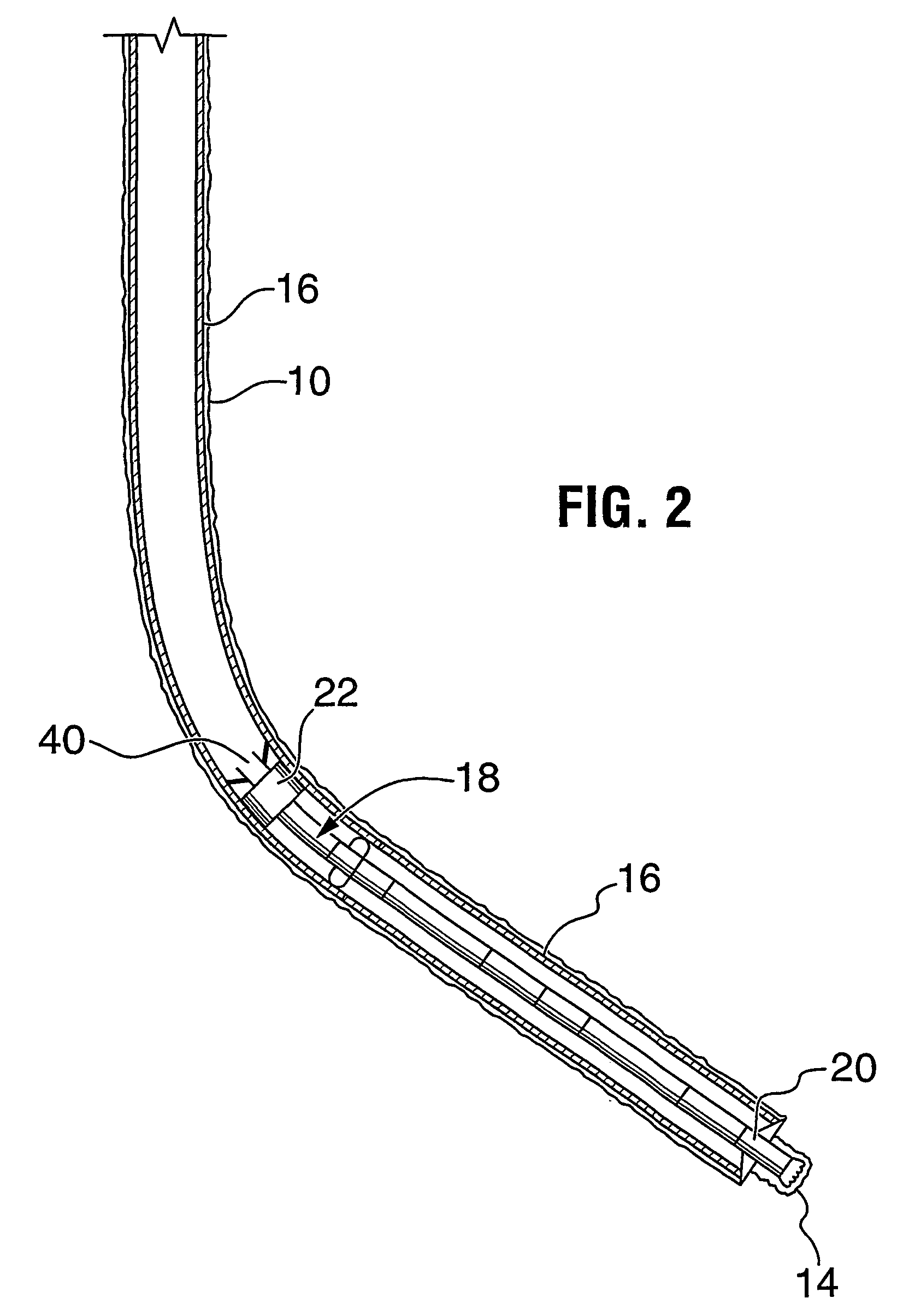Method for drilling with casing
a wellbore and casing technology, applied in the direction of drilling pipes, drilling well accessories, directional drilling, etc., can solve the problems of difficult control of the well, time-consuming and costly running of casing into the borehole, and pulling out the drill pipe, so as to reduce the risk of a cave-in and the effect of increasing the chance of a cave-in
- Summary
- Abstract
- Description
- Claims
- Application Information
AI Technical Summary
Benefits of technology
Problems solved by technology
Method used
Image
Examples
Embodiment Construction
[0019]Referring to FIG. 1, a wellbore 10 is shown during a drilling operation. Wellbore 10 extends between surface 12 and bottom 14 of the wellbore. A drill string 16 formed of casing extends from surface into the wellbore. A drilling assembly 18 is connected at the distal end 16′ of the drill string and extends a distance d from distal end 16′ to total depth 14. Drilling assembly 18 includes a pilot bit 19 and a plurality of underreamers 20. Also included in drilling assembly are a drill lock member 22 for engaging the drilling assembly to the drill string, a drill collar 24, a stabilizer 25, a non-magnetic drill collar 26 including an MWD survey instrument and mud pulse generator 27 and a mud motor 28 for driving the bits 19 and 20. In such an arrangement the distance d is about 100 to 120 feet. This distance can be reduced in a non-directional drilling operation and / or by use of a non-magnetic MWD.
[0020]Drilling assembly 18 is connected into drill string 16 by means of latches on...
PUM
 Login to View More
Login to View More Abstract
Description
Claims
Application Information
 Login to View More
Login to View More - R&D
- Intellectual Property
- Life Sciences
- Materials
- Tech Scout
- Unparalleled Data Quality
- Higher Quality Content
- 60% Fewer Hallucinations
Browse by: Latest US Patents, China's latest patents, Technical Efficacy Thesaurus, Application Domain, Technology Topic, Popular Technical Reports.
© 2025 PatSnap. All rights reserved.Legal|Privacy policy|Modern Slavery Act Transparency Statement|Sitemap|About US| Contact US: help@patsnap.com



